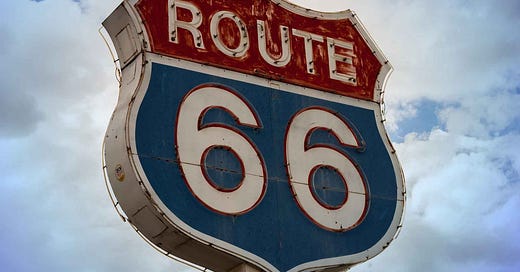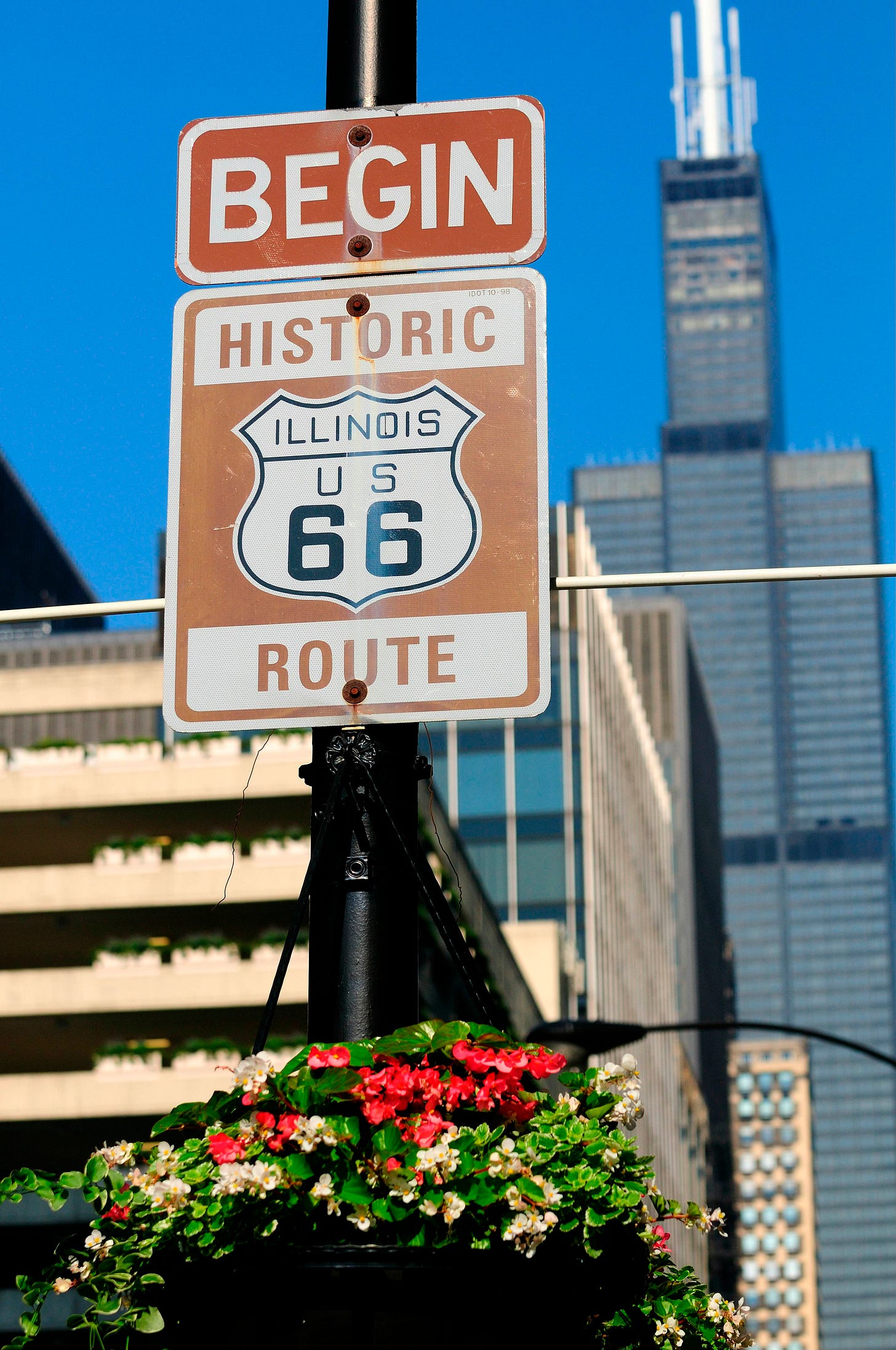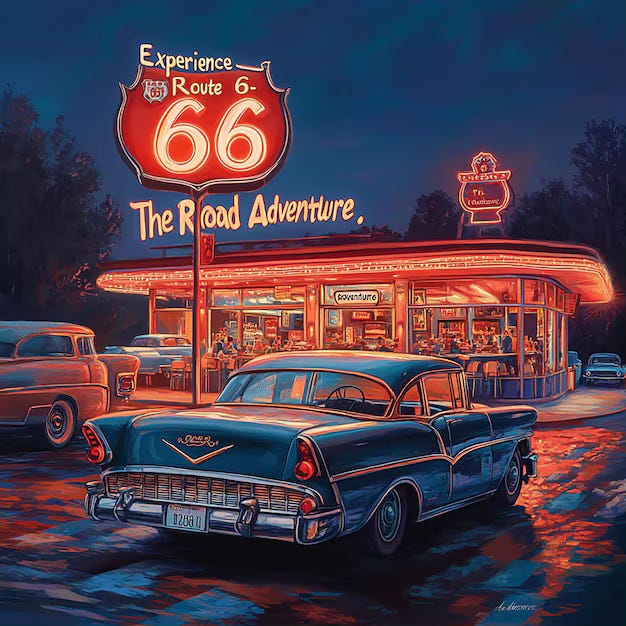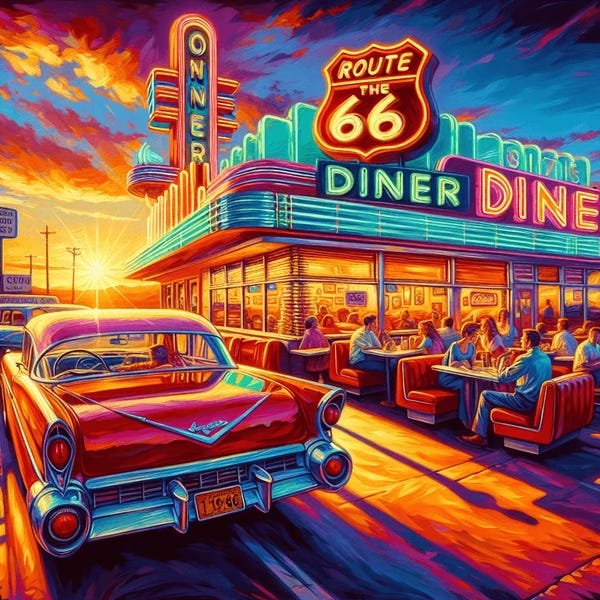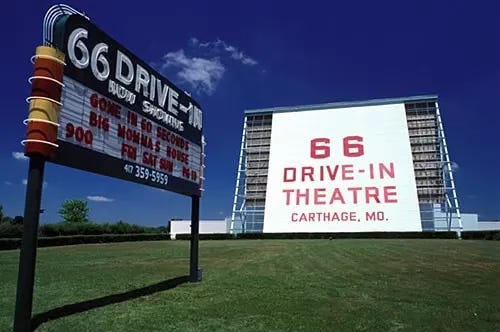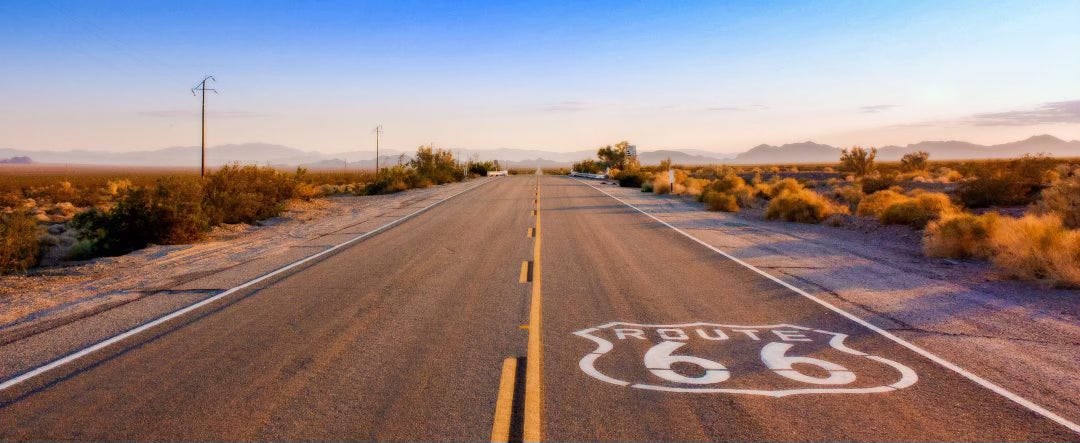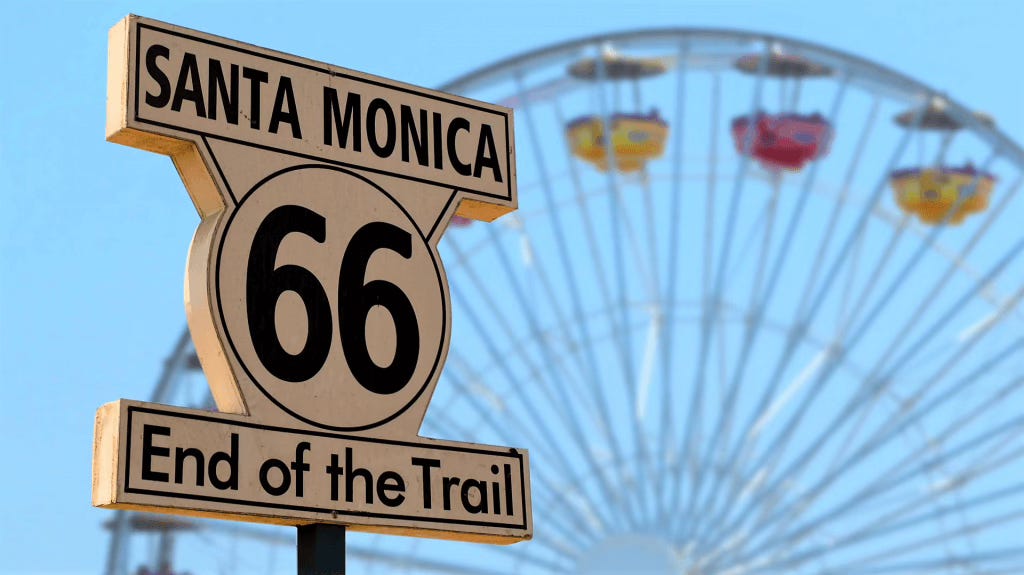Route 66: The Mother Road and Its Cultural Significance
Stretching nearly 2,500 miles across the United States, Route 66 is more than a highway—it is a journey through the heart of America. Known as “The Mother Road,” this iconic route has carried dreamers, adventurers, and hard-working Americans for nearly a century. From its humble beginnings in 1926 to its place in pop culture, Route 66 remains a living testament to the spirit of exploration, resilience, and creativity that define this nation.
Route 66 is not just a road. It’s the road—a path to opportunity, a canvas of small-town Americana, and a thread that connects generations. Let’s take a ride through the history, landmarks, and enduring legacy of this national treasure.
The Birth of Route 66: A Road to Opportunity
At the dawn of the 20th century, America was growing rapidly, and its people were on the move. The automobile revolution brought newfound freedom, but a lack of reliable roads hindered travel. Enter Route 66.
In 1926, the U.S. Highway System was established, and Route 66 was born. Running from Chicago, Illinois, to Santa Monica, California, the highway connected the Midwest to the West Coast, weaving through Illinois, Missouri, Kansas, Oklahoma, Texas, New Mexico, Arizona, and California. At 2,448 miles, it became a vital artery of commerce, connecting small towns and rural communities to urban centers.
For many, Route 66 symbolized a road to opportunity. During the Dust Bowl of the 1930s, desperate families fleeing economic hardship traveled west along this road, seeking a new life in California. John Steinbeck immortalized this migration in The Grapes of Wrath, where he called Route 66 “The Mother Road, the road of flight.”
More than just a route for goods and people, Route 66 brought life to small-town America. It gave rise to diners, motels, gas stations, and attractions that turned humble communities into bustling stopovers.
Route 66 and the American Dream
As America emerged from the Great Depression and World War II, a newfound prosperity swept the nation. Families packed their cars and hit the road, eager to see the country. Route 66 became the highway of dreams—a symbol of freedom, adventure, and the American road trip.
Roadside America Comes to Life
The golden age of Route 66 was the 1950s and 1960s, when quirky roadside attractions and mom-and-pop businesses defined the traveler’s experience. This was an era when diners offered bottomless coffee, neon signs lit up the night, and motels welcomed weary travelers with promises of hot showers and soft beds.
Some of the most iconic landmarks of this era still stand:
Cadillac Ranch (Amarillo, Texas): A surreal art installation featuring ten Cadillacs half-buried nose-first in the Texas soil, inviting visitors to leave their mark with spray paint.
The Blue Whale of Catoosa (Oklahoma): A giant, cheerful blue whale that became a beloved family stop.
The Wigwam Motels (Holbrook, Arizona): Teepee-shaped motel rooms that gave travelers a quirky, unforgettable night’s stay.
Delgadillo’s Snow Cap Drive-In (Seligman, Arizona): Known for its humorous menu and vintage charm, it remains a must-stop for Route 66 enthusiasts.
For millions, Route 66 was more than a road. It was a path to discovery. Each stop along the way told a story of local ingenuity, creativity, and pride—a story as unique and colorful as America itself.
Route 66 in Popular Culture
The allure of Route 66 captured the imagination of artists, musicians, and filmmakers, embedding it into the fabric of American culture.
Music
In 1946, Bobby Troup penned the iconic tune “(Get Your Kicks on) Route 66,” immortalized by Nat King Cole. The song’s infectious rhythm and lyrics celebrated the cities and towns along the highway, inspiring countless road trips. Over the years, legends like Chuck Berry, The Rolling Stones, and Depeche Mode covered the song, keeping its magic alive for new generations.
Hollywood
Route 66 has been a star of the silver screen. From The Grapes of Wrath to Easy Rider, filmmakers portrayed the road as a symbol of freedom, rebellion, and self-discovery. For modern audiences, Pixar’s Cars (2006) reignited love for Route 66, introducing its charm to families worldwide.
Literature and Art
Writers like Jack Kerouac celebrated the spirit of the road in works like On the Road, inspiring wanderers to seek adventure. Photographers and painters captured Route 66’s neon lights, vintage cars, and endless horizons, preserving its legacy through art.
Route 66 became more than a road—it became a dreamscape, a place where the American spirit came alive.
The Decline and Preservation of Route 66
The golden age couldn’t last forever. In 1956, President Eisenhower signed the Interstate Highway Act, and modern freeways began to bypass Route 66. By the 1970s, traffic slowed to a trickle, and towns once dependent on travelers began to fade.
In 1985, Route 66 was officially decommissioned. For many, it felt like losing a piece of America’s soul.
Yet, true to the American spirit, Route 66 refused to die. Enthusiasts, preservationists, and local communities fought to save the Mother Road. The National Route 66 Preservation Bill (1999) helped protect historic landmarks, while festivals, museums, and car clubs brought new life to the highway.
Restored Landmarks
The U-Drop Inn (Shamrock, Texas): A stunning Art Deco gas station turned museum.
66 Drive-In Theatre (Carthage, Missouri): A fully operational drive-in that transports visitors back to the 1950s.
Roy’s Motel and Café (Amboy, California): A restored desert stop with its iconic neon sign.
Today, nostalgia tourism has revived towns and businesses along Route 66. International travelers flock to the highway, eager to experience its magic firsthand.
Must-See Stops on Route 66
For those ready to hit the road, Route 66 offers a treasure trove of landmarks:
Chicago, Illinois:
Route 66 Begin Sign and Lou Mitchell’s Diner—where the journey begins with coffee and donuts.
St. Louis, Missouri:
Chain of Rocks Bridge—a unique bridge with a 30-degree bend over the Mississippi River.
Carthage, Missouri:
66 Drive-In Theatre—a classic drive-in still showing films.
Amarillo, Texas:
Cadillac Ranch—the iconic buried cars waiting for your spray-painted masterpiece.
Santa Rosa, New Mexico:
Blue Hole—a stunning crystal-clear swimming hole for a refreshing stop.
Winslow, Arizona:
Standin’ on the Corner Park—celebrating the Eagles’ hit Take It Easy.
Flagstaff, Arizona:
Meteor Crater—a massive, ancient impact site that’s awe-inspiring to behold.
San Bernardino, California:
First McDonald’s Museum—where the fast-food empire began.
Santa Monica, California:
Santa Monica Pier—the official end of the road, overlooking the Pacific Ocean.
Every stop on Route 66 tells a story of America’s past—its creativity, perseverance, and quest for adventure.
Why Route 66 Still Matters Today
Route 66 remains a symbol of what makes America great: freedom, opportunity, and the open road. It connects us to our history and celebrates the people who made this country what it is today.
Travelers rediscover small-town America—its diners, motels, and quirky landmarks—while experiencing the warmth of communities that refuse to let history fade. Events, car shows, and festivals along the route bring people together, reminding us that Route 66 isn’t just a road. It’s a journey.
In a fast-paced world, Route 66 invites us to slow down, appreciate the scenery, and embrace the simple joy of the open road.
Conclusion
Route 66 is America’s road—a living museum of our nation’s history, creativity, and dreams. It carried Dust Bowl migrants, road trippers, and countless adventurers, each chasing their own slice of the American dream.
Today, the Mother Road endures, inspiring new generations to explore its landmarks, meet its people, and experience its magic.
So pack your bags, roll down the windows, and hit the road. Adventure, nostalgia, and the soul of America await you on Route 66.
Share Your Memories and Subscribe
What are your favorite Route 66 memories, or where would you love to stop? Share your thoughts below, and don’t forget to subscribe to The Great American Gazette for more stories that celebrate the people, places, and traditions that make America great!

